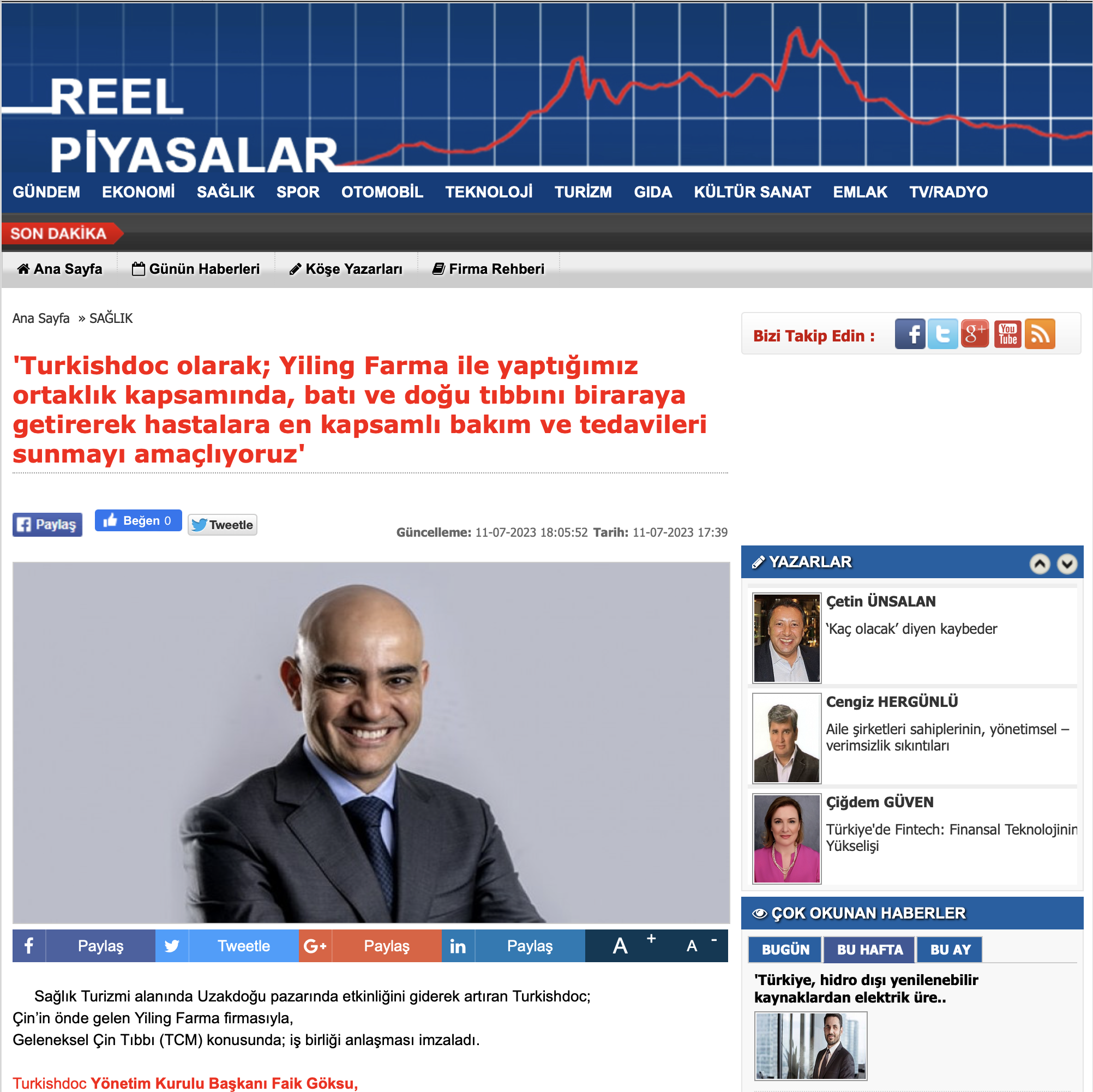Turkishdoc
Stem Cell Therapy in Diabetes
What is Diabetes?
Diabetes is a lifelong disease that develops as a result of the inability of the gland called the pancreas to produce enough insulin hormone in your body or the inability to use the insulin hormone it produces effectively. As a result, the person cannot use the sugar that passes into the blood from the foods she eats, and blood sugar rises (hyperglycemia).
Most of the foods we eat, especially those containing carbohydrates, are converted to glucose in the body to be used for energy. The pancreas, an organ located on the back surface of the stomach, produces a hormone called “insulin” that enables our muscles and other tissues to take glucose from the blood and use it as energy. Glucose, which passes into the blood with food, enters the cells via the hormone insulin. Cells use glucose as fuel. If the amount of glucose is more than the body’s fuel requirement, it is stored in the liver (sugar storage = glycogen) and adipose tissue.
An individual without diabetes whose blood sugar does not rise above 120 mg/dl in fasting and 140 mg/dl in satiety (two hours after the start of the meal). If the blood glucose level measured during hunger or satiety is above these values, it indicates the presence of diabetes.
Whether a person has diabetes is determined by measuring the Fasting Blood Glucose (FGL) or the Oral Glucose Tolerance Test (OGTT). An FBC measurement of 100-125 mg/dl is a hidden sugar (pre-diabetic) signal. An FBC measurement of 126 mg/dl or more indicates the presence of diabetes.
In OGTT, the blood glucose value 2 hours after glucose-rich fluid intake is important. If the second-hour blood glucose measurement is 140-199 mg/dl, latent sugar is diagnosed, and if it is 200 mg/dl and above, diabetes is diagnosed.
What are the symptoms of diabetes?
Diabetes disease manifests itself in individuals with three basic symptoms. These can be listed as eating more than normal and feeling fullness, frequent urination, dryness and sweetness in the mouth, and accordingly the desire to drink more water. Apart from that, other symptoms of diabetes that can be seen in people can be listed as follows:
- Weakness and feeling of tiredness
- Fast and unintentional weight loss
- blurry vision • Numbness and tingling discomfort in the feet
- Slower-than-normal healing of wounds
- Dryness and itchiness on the skin
- Acetone-like odor formation in the mouth
What are the reasons for diabetes?
As a result of many studies on the causes of diabetes, it was concluded that genetic and environmental factors play a role in diabetes. In diabetes, which has two types, Type 1 Diabetes and Types 2 Diabetes, the factors that cause the disease vary according to these types.
While genetic factors play a role in the emergence of Type 1 Diabetes, viruses that damage the pancreatic organ that produces the insulin hormone, which is involved in the regulation of blood sugar, and disorders in the functioning of the body’s defense system is also among the factors. this causes disease. In addition, the causes of Type 2 diabetes, the more common type of diabetes, can be listed as follows:
- Obesity (excessive weight)
- Having a history of diabetes in the parents • Advanced age
- Sedentary lifestyle
- Stress
- Pregnancy Diabetes during pregnancy and a baby with a higher birth weight than normal giving birth
What are the types of Diabetes?
Types of diabetes are listed as follows:
- Type 1 Diabetes (Insulin-dependent diabetes): A type of diabetes that usually occurs in childhood, is caused by insufficient or no insulin production in the pancreas, and requires external insulin intake.
- Type 2 Diabetes: A type of diabetes that occurs as a result of the cells become insensitive to the hormone insulin, which regulates blood sugar.
- Latent Autoimmune Diabetes in Adults (LADA): Type 1 diabetes-like insulin-dependent diabetes mellitus caused by autoimmune (self-harm of the body due to dysfunction in the immune system) seen in advanced ages.
- Maturity Onset Diabetes (MODY): Type 2 diabetes-like diabetes mellitus seen at an early age
- Gestational Diabetes: A form of diabetes that develops during pregnancy Apart from the above-mentioned types of diabetes, the pre-diabetes period, which is known as latent diabetes among people, is the period in which blood sugar tends to rise slightly before it is high enough to diagnose diabetes before Type 2 diabetes occurs, and diabetes can be prevented or slowed down with the right treatment and diet. the name is given. The two most common diabetes types are Type 1 Diabetes and Type 2 Diabetes.
How is Diabetes Diagnosed?
The two most basic tests used in the diagnosis of diabetes are the fasting blood glucose measurement and the Oral Glucose Tolerance Test (OGTT), also known as the sugar loading test. In healthy individuals, the fasting blood glucose level varies between 70-100 mg/Dl on average. fasting blood glucose standard above 126 mg/Dl is competent for the identification of diabetes.
If this value is between 100-126 mg/Dl, the postprandial blood sugar is investigated by applying the OGTT to the individual. As a result of measuring blood sugar 2 hours after the start of the meal, a blood glucose level above 200 mg/Dl is an indication of diabetes, and a range of 140-199 mg/Dl is an indicator of the pre-diabetes period, called latent sugar. In addition, the HbA1C test, which reflects the blood sugar level of the last 3 months, is higher than 7%, indicating the diagnosis of diabetes.
What are the Diabetes treatment methods?
Diabetes treatment methods differ according to the type of disease. In type 1 diabetes, medical nutrition therapy should be applied meticulously with insulin therapy. The patient’s diet is planned by the dietitian according to the insulin dose and plan recommended by the doctor.
The life of individuals with Type 1 diabetes can be made much easier with the application of carbohydrate counting, in which the dose of insulin can be adjusted according to the carbohydrate content of the foods. In individuals with type 2 diabetes, in addition to maintaining the diet, treatment often involves the use of oral antidiabetic drugs to increase the sensitivity of cells to insulin hormone or directly to increase the secretion of insulin hormone.
In cases of diabetes mellitus and non-compliance with recommended treatment principles, high blood sugar levels lead to many health problems, especially neuropathy (nerve damage), nephropathy (kidney damage), and retinopathy (eye retina damage). .Therefore, if you are an individual with diabetes, do not neglect to have regular check-ups.
Stem cell therapy in Diabetes
Mesenchymal stem cells are unique, self-renewing cells that can differentiate into different cell types. They can transform into many cells, especially bone, fat, cartilage, muscle, heart muscle, liver cell, beta cells in the pancreas that secrete insulin, and nerve cells.
When these cells are applied to the body, they migrate to unhealthy tissues and repair and restore damaged tissues. For example, when these stem cells are given to patients who have had a heart attack or heart failure, they narrow the area of damage and improve the left ventricle functions of the heart.
After 2014, mesenchymal stem cell treatments started to be applied in a series in many countries. Today, practices abroad continue in nearly one hundred diseases.
So-called auto-immune diseases, including type 1 diabetes; In a group of diseases that result in the body’s defense system destroying its natural cells, the disease has been tried to be controlled with some drugs that suppress the immune system until now. Patients who could not tolerate the side effects of these drugs were also not few.
Mesenchymal stem cells have been a source of healing in all auto-immune diseases such as type 1 diabetes and Hashimoto’s thyroiditis, with their strong immunosuppressive and repairing immune mechanisms.
Mesenchymal stem cells have no safety issues in type 1 and type 2 diabetes. We take the person’s stem cells from the adipose tissue or bone marrow in the abdomen and multiply and return them to the person. So we are doing the autologous application. There is no possibility of causing an allergic and immunological reaction in one’s cells. No side effects have been observed in thousands of applications made in the world to date.
Stem cells treat complications as well as treat diabetes. For example, a patient who has burns on the feet and impaired vision also get rid of these complaints during the treatment. Since it repairs the damaged tissues, these complaints of the patient who also has joint pains are reduced. In other words, the patient who has the stem cell treatment for his diabetes is simultaneously relieved of many complaints and rejuvenates his metabolism.
The stem cells given are at a level and number to replace the loss of cells lost by the body by aging in the last 10-20 years, and they not only restore the pancreas but also affect the whole body. Even after stem cell treatment, chronic fatigue disappears; vision and hearing, memory may increase. Patients receiving treatment feel more energetic; because the metabolic pathways that are broken are working.
The therapeutic effect of stem cell transplantation from cord blood in the treatment of type I Diabetes:
Type 1 diabetes (diabetes) disease (Diabetes Mellitus) occurs with irreversible damage or loss of function of insulin-producing β cells in the islets of Langerhans in the pancreas. This picture, which occurs as a result of organ-specific immune (immune) destruction, is an autoimmune condition. The situation in autoimmunity-dominated clinical pictures can be defined as the membrane of the person’s immune system cells. Beta cells play a critical role in sensing blood glucose (sugar) levels. Insulin is required to keep glucose levels within a narrow range under physiological conditions. Insulin plays an important role in the regulation of glucose hemostasis.
In the case of Type 1 Diabetes, blood sugar levels cannot be controlled due to autoimmune destruction, therefore patients have to take exogenous (external) insulin throughout their lives. Millions of people continue their lives by taking insulin from outside for life. However, insulin cannot show any effect on autoimmunity, which is the formation mechanism of the disease. Two important issues have been raised in clinical research on the treatment of type 1 diabetes and are generally focused on these points. The first is T cell-mediated autoimmune disorder of the pancreatic microenvironment and its control, thereby restructuring immune homeostasis. The second is the approach of how to preserve a small number of remaining beta cells or replace damaged beta cells by transplanting beta cells. Although allogeneic (from another individual) islet (beta cell-rich) cell transplantation has recently emerged as a promising potential treatment, donor shortage and the potential for immunological rejection are seen as significant challenges.
Apart from these two important approaches, the approach to controlling the autoimmune dimension of diabetes with stem cells obtained from cord blood, which has been discussed recently, has gained importance. In addition, due to the ability of stem cells to transform and differentiate into many cells that make up the body, it can provide beta cell restructuring, which is an approach that stem cell and cellular therapy research focuses on.
MESENCHYMAL STEM CELLS: THE POTENTIAL FOR CELL THERAPY AND REGENERATION
You can get it.
Cord Blood:
Human Umbilical (cord) cord blood is a vital structure in the transport of nutrients and oxygen between mother and fetus. It is easy to isolate with a non-invasive (non-invasive) method without any complications (undesirable medical condition/event). Because of this feature, cord blood is one of the first preferred stem cell sources as an important source of stem cells. Human cord blood is recognized as a very valuable medicinal product. The successful application of cord blood in many fields, from the first successful human application to the present day, continues increasingly. Cord blood contains multiple sources of cells, such as hematopoietic stem cells, mesenchymal stem cells, endothelial progenitor cells, cord blood stem cells, natural killer cells, and regulator t cells, which are used and have the potential to be used in the field of stem cell and cellular therapy. Diabetes treatment with stem cells
In recent years, many scientific studies have defined various strategies and approaches to make cord blood and the cell types it contains useful in diabetes treatment processes. Of the cord blood cells, CD45 + UCB-SC cells and CD90 + UCB-MSC cells are cell groups with important potential, including differentiation potential and immunoregulatory potential. The isolation of these cells and their reproduction in the laboratory are performed successfully. Especially cell and stem cell culture techniques have developed rapidly in recent years
Clinical Application:
Autologous (own cord blood) cord blood infusion was applied to the patients four months after the diagnosis of Type 1 diabetes. Patients (children) with a mean age of 5.5 were followed up metabolically and immunologically at the 3rd, 6th, 9th, and 12th months. Initial findings were that autologous cord blood infusion is safe in patients with type 1 diabetes. No adverse events or complications were reported after the infusion.
Diabetes Treatment with Stem Cells
Researchers from the Washington University School of Medicine have proven that it is possible to use human stem cells to functionally treat diabetes in mice in just a few weeks. The treatment was able to keep the disease at bay for more than nine months to more than a year in some mice.
In the study, published in the journal Nature Biotechnology, they used human pluripotent stem cells, which can take the shape of any type of human cell. They used the cells to produce pancreatic beta cells that secrete insulin. This is because people with diabetes cannot produce enough insulin to control their blood sugar levels.
The mice were induced to have advanced diabetes using a substance known as streptozotocin. Human cells were then implanted into animals. Afterward, the rodents’ blood sugar levels were successfully controlled and the disease was found to be functionally cured.
Taking part in the research, Assoc. Dr. “The mice had very severe diabetes with blood glucose readings greater than 500 milligrams per deciliter of blood, at levels that would normally be fatal to a human,” Jeffrey R. Millman said. “When we gave the mice insulin-secreting cells, their blood sugar levels returned to normal within two weeks and stayed that way for months.” made a statement.
The key element of the research is the generation of insulin-secreting cells. Activating stem cells in a certain way also risk the production of unwanted types of cells. While beta cells are involved, other pancreatic or liver cells can also form. Research shows that these cells are not harmful, but do not work, and reduce the overall therapeutic value of the treatment.
Diabetes Type-1 and Type-2
Diabetes is one of the common hormonal diseases. This disease is often referred to as the non-infectious epidemic of the 21st century. 200 million people worldwide have diabetes and this number is increasing. By 2025, the number of patients suffering from diabetes is expected to increase by 50%.
Diabetes is expressed as high blood sugar (glucose) caused by insufficient insulin production in the body (Type I diabetes) or the inability of the produced insulin to be used properly by the body’s cells (Type II diabetes).
SVF Stem Cell Therapy in Diabetes Type-1 and Type-2 Disease
As a result of the treatment of diabetes patients with stem cells; a 50-70% reduction in blood sugar level and insulin dose is taken from outside could be achieved. More than 50% of cases have improved with stem cell therapy. It has been reported that SVF stem cells, in particular, affect the vascular damage caused by diabetes, the repairing function of tissues and organs, prolonging the life expectancy of the patient, and increasing the comfort of life. One of the biggest problems faced by diabetes patients is organ or tissue failure, which manifests itself with wounds on the feet, deterioration of kidney functions, and inadequate oxygenation and nutrition in many organs due to vascular damage in the medium term. SVF stem cells protect tissues and organs that are heavily affected by diabetes such as kidneys, especially by supporting the repair and regeneration of vessels. Then, by providing immune modulation in its content, it reconstructs the immune cells that have fought against the insulin-producing beta cells. Recovery is rapid after stem cell transplantation. At the end of the 3rd month the patient; Reduces the dosages of the drugs used, has a more lively and healthy appearance, a 40-70% decrease in post-meal blood glucose levels compared to the previous values, improvement in HbA1C values, increased sexual performance, increased blood supply in the feet and the appearance of living tissue due to kidney functions, urea and creatinine values have been reported to improve.











